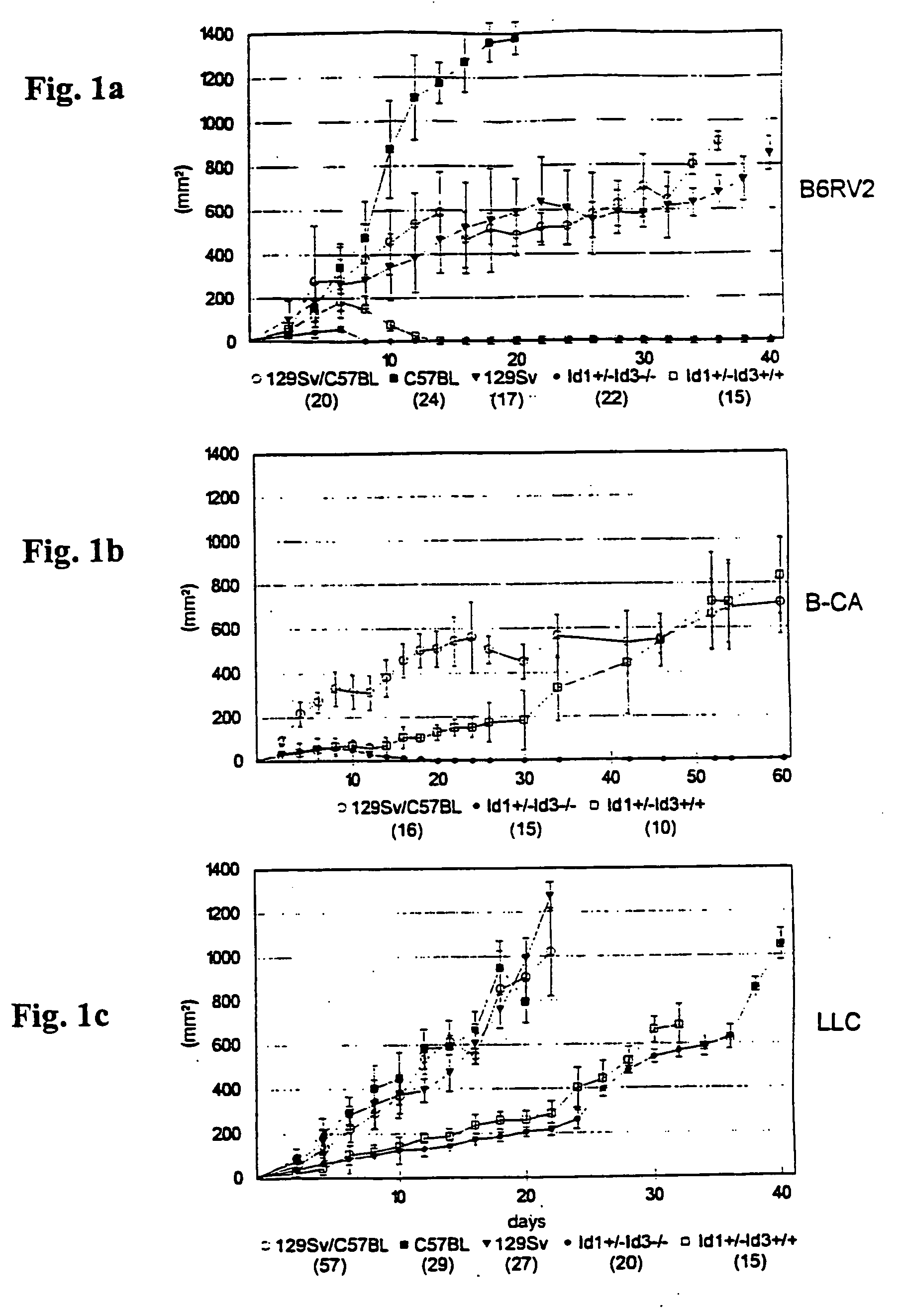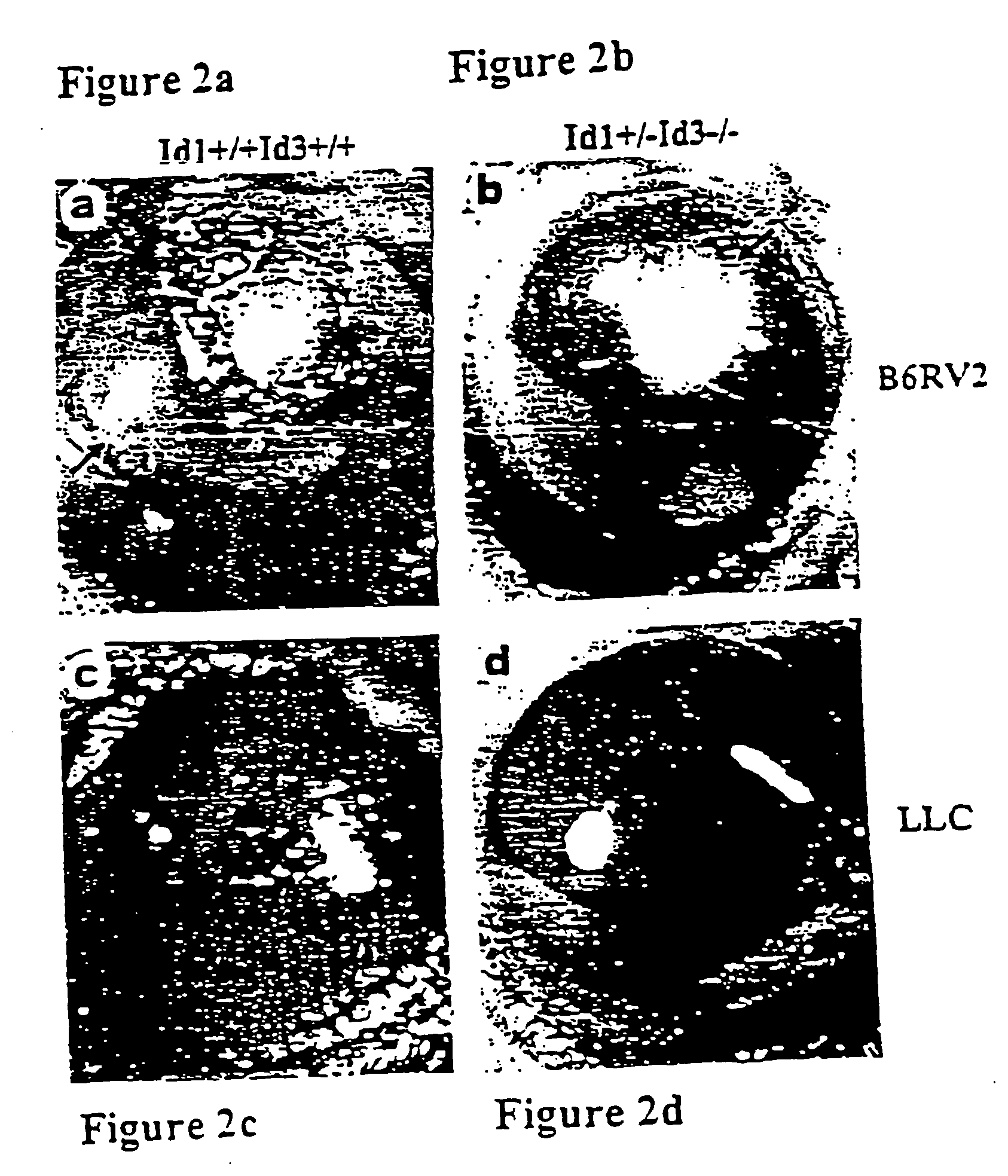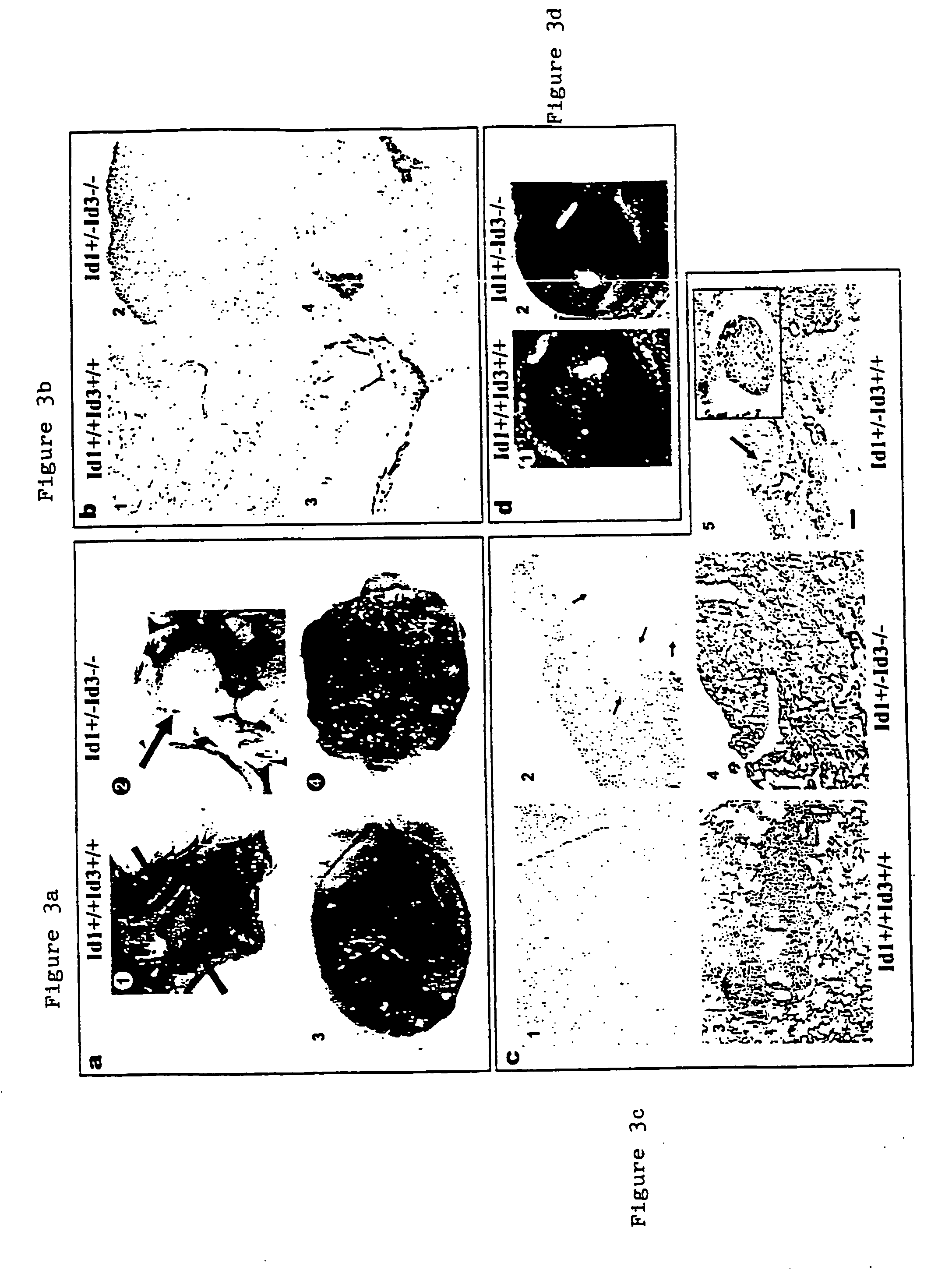Inhibitor of differentiation knockout mammals and methods of use thereof
a technology of knockout mammals and inhibitors, which is applied in the field of knockout mammals, can solve the problems of little knowledge of the involvement of bhlh proteins during differentiation, and achieve the effects of preventing, reducing, and determining the expression and/or activity level
- Summary
- Abstract
- Description
- Claims
- Application Information
AI Technical Summary
Benefits of technology
Problems solved by technology
Method used
Image
Examples
example 1
Id1-l-16-l-Mice
[0098] Mice lacking one to four alleles of Id1 and Id3 are generated by intercrossing Id1+ / Id3± mice. Offspring lacking one to three alleles in any combination are indistinguishable from the wild type, but no animals lacking all four Id alleles are born. To determine when Id1− / −Id3− / − mice die, Id1− / Id3± mice are intercrossed and the embryos examined from E8.5 to birth. Between E8.5 and E 10.5, Id1− / −Id3+ / +, Id1a-Id3± and Id14-Id3-I-embryos are represented in a 1:2:1 mendelian ratio. Id1− / Id3− / − embryos are grossly normal up to E10.5 but reduced in size by 30% at E11.5 and E12.5. By E12.5, the mutants exhibit cranial hemorrhage and no embryos survive beyond E13.5, indicating that expression of either Id1 or Id3 is essential for viability.
[0099] The ganglionic eminences of Id1− / −Id3− / − embryos develop cavitational lesions. Areas of hypocellularity form at E11.5, and by E12.5 coalesced into a cavity. Aberrant capillaries flank the cavity, which rupture at E13.5, resul...
example 2
Id Inhibits Neuronal Differentiation
[0100] Mice having Id1− / −Id3− / − mutation are examined to determine the rate of growth and differentiation of their brain cells. It is found that Id1− / −Id3− / − mutant mice have smaller brain size than the wild-type mice. The decrease in the brain size of the mutant mice may be due to a decrease in proliferation of neuroblasts, or an increase in apoptosis.
[0101] At E10.5, no significant differences in apoptosis are observed between wild-type and Id1− / −Id3-1-embryos. Similarly, at E10.5, no difference is found when cell proliferation was measured by immunodetection of K-67, a nuclear antigen expressed in all proliferating cells except those in C30 or early G1. In El 1.5 mutants, however, there are fewer proliferating cells in the neuroepithelium of the telencephalon and the rhombencephalon.
[0102] The withdrawal of neuroblasts from the cell cycle is accompanied by altered expression of cell cycle regulatory proteins. In Id1-null embryonic fibroblast...
example 3
Regulation of Neuronal bHLH Expression By Id
[0103] To define molecular mechanism of premature neuronal differentiation in the mutants, the expression pattern of neuronal-specific bHLH genes is examined. Like myogenic bHLH proteins, a hierarchy of activities is found in the neuronal bHLH family within the determination genes (MATH 1, MATH3, MASH-1, Ngn1 and Ngn2) including the expression of differentiation effectors (NeuroD1, NeuroD2 and MATH2) (Risau et al., Nature 386: 671-674, (1997)).
[0104] Neuro DI expression is similar in wild-type and mutant embryos at E9.5 and E10.5, but is increased in the ganglionic eminences at E11.5. No differences are observed in NeuroD2 and NeuroD3 expression. In E11.5 mutants, MATH1 expression is more extensive in the rhombencephalon. MATH2 is enhanced and more extensive in the ganglionic eminences and dorsal rhombencephaion, and MATH3 is more extensive in the dorsal telencephalon and ganglionic eminences. By E12.5, no differences are detectable for ...
PUM
| Property | Measurement | Unit |
|---|---|---|
| Time | aaaaa | aaaaa |
| Time | aaaaa | aaaaa |
| Time | aaaaa | aaaaa |
Abstract
Description
Claims
Application Information
 Login to View More
Login to View More - R&D
- Intellectual Property
- Life Sciences
- Materials
- Tech Scout
- Unparalleled Data Quality
- Higher Quality Content
- 60% Fewer Hallucinations
Browse by: Latest US Patents, China's latest patents, Technical Efficacy Thesaurus, Application Domain, Technology Topic, Popular Technical Reports.
© 2025 PatSnap. All rights reserved.Legal|Privacy policy|Modern Slavery Act Transparency Statement|Sitemap|About US| Contact US: help@patsnap.com



